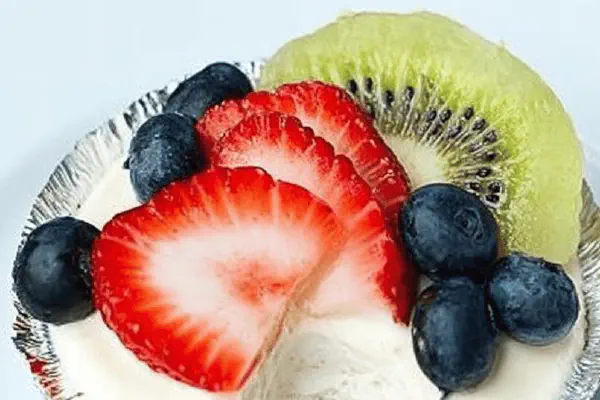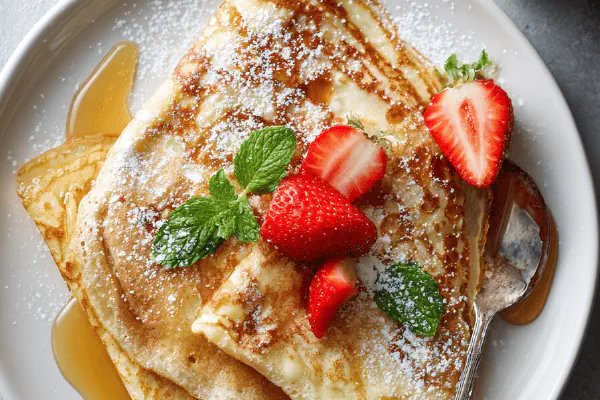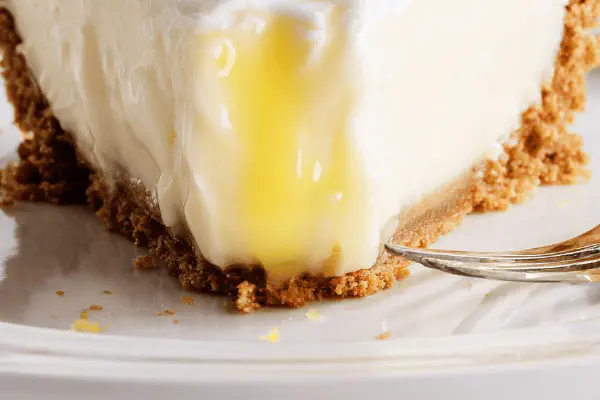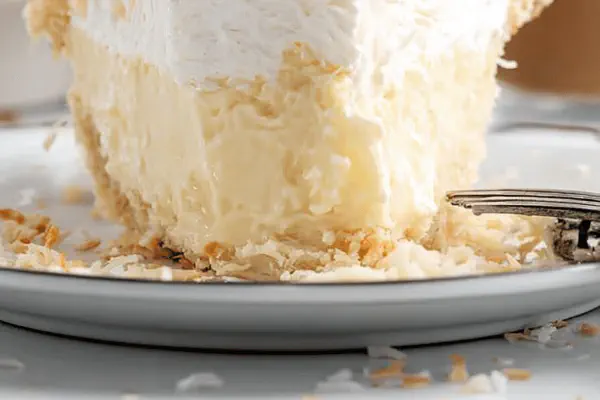Quick Lime Tart

By Emma
Certified Culinary Professional
Ingredients
Lime curd
- 5 eggs, room temperature
- 140 ml sugar (about 2/3 cup minus 1 tbsp)
- Zest and juice of 4 limes (instead of 5)
Crust
- 1 9-inch (23 cm) graham cracker crust or pâte brisée, prebaked
About the ingredients
Method
===
- Position oven rack low, preheat oven to 175 °C (350 °F). Lower temp helps avoid too-dark edges on crust. Prebake crust fully until golden-brown and firm to touch if using pâte brisée. Graham crust usually comes ready.
- In mixing bowl, whisk eggs vigorously with sugar and finely grated lime zest until mixture lightens and shows streaks. This aeration helps texture of final curd. Combine juice of 4 limes gradually, folding smoothly but quickly. Pour carefully into crust; a thin layer but packed with tang.
- Bake in center rack about 16 to 20 minutes. Watch for gentle wobble in custard's center—firm edges with subtle jiggle inside. If center solidifies fully, tart turns dense and dull. Slight wobble means creaminess. Oven watchers swear by this jiggle test. Cooler oven temp and wider pan edges yield even cooking.
- Remove and let cool slightly on wire rack until barely warm. Then chill minimum 1.5 hours, preferably closer to 2, so curd firms and slices clean. Room temp slices get messy.
- Serve chilled, optionally topped with whipped coconut cream or thin lime slices for brightness. If too tart or thick, a thin dusting of powdered sugar tames sharp edges without drowning flavor.
- Store covered in fridge up to 3 days. Crust may soften; re-crisp by reheating crust-only slices 3-5 minutes in toaster oven but avoid heating lime filling itself. No eggshell bits—double check zest quality; pith bitterness ruins balance.
- Common trap: overbake curd until cracked surface appears—sign you lost moisture and silkiness.
- Swap note: I swapped 1 lime out of 5 for a lemon’s zest. Slight lemon note helps lift lime’s sharpness, less aggressive. Try adding tiny pinch sea salt next round for deeper depth.
Cooking tips
Chef's notes
- 💡 Room temp eggs bind curd better no lumps. Cold eggs shock mix cause uneven curd texture. Whisk sugar and eggs until streaky, light but no foam trap. Folding zest last keeps oils fragrant, avoid bitterness from pith. Juice strained no pulp—pulp ruins silk texture. Watch for gentle wobble mid bake, not firm or liquid-y. Oven at 175 °C slows browning, keeps edges tender, watch rack placement low to preserve custard evenness.
- 💡 Graham crust means no blind bake if pre-made but press firmly with butter or crumbs to avoid sog. Traditional pâte brisée needs blind bake with weights till golden, dry edges key. If curd cracks on surface you overbaked, moisture lost, flavor dull. Tent foil mid bake if crust edges burn early. Room temp after baking avoids condensation sog. Chill curd 1.5-2 hours minimum or slice falls apart gritty or messy.
- 💡 Swap 1 lime zest for lemon zest adds subtle bright lift without tart clash. Optional pinch salt deepens flavor balance but easy to miss. Sugar reduced from common 150 ml prevents oversweet, sharp lime needs balance. Powdered sugar dust tweaks sharpness if too tart or thick. Whipped coconut cream topping optional for texture contrast but avoid drowning vibrant lime flavor. Slice cold, warm cuts smear easily.
- 💡 If custard too firm, baked too long or too hot; if too runny, underbaked or oven rack too high. Watch crust edges not shriveling or burning. Reheat leftover crust-only slices 3-5 min toaster oven to crisp, never heat custard filling again or risk split curd texture. Zest only yellow, no white pith for bitterness; dry limp zest toss. Fresh zest oils fragrant when rubbed slow, dry.
- 💡 Don’t rush jiggle test edges set, center moves slightly gelatin style. Overbeating eggs traps air—curd cracks on bake. Fold juice smoothly but quickly to retain air, avoid curd collapse. Cooling wire rack prevents sog, room temp then fridge firmer cut. If no limes, lemon subs juice but brightness dulls. Timing flexible plus or minus few minutes, own oven heat key. Freeze tart ruins texture, better chill longer.
Common questions
Why room temp eggs?
Cold eggs shock curd, lumps form. Room temp helps sugar dissolve smooth, aeration better. Makes custard silkier. Quick shift from fridge to bowl can cause bad texture. Learned messing with temps ruins batch.
Can I skip blind baking pâte brisée?
No. Blind baking with weights stops soggy bottom. Butter crust traps moisture from curd. Prebaking solidifies base. Graham crust bypasses this but less traditional. Skip blind baking and crust edges undercook, taste raw.
What if curd cracks?
Overbaked—moisture lost, texture rubbery. Cracks tell you pulled too late or oven too hot. Tent with foil mid bake if edges burn fast, cut time down. Underbaking makes runny, but cracks form only with dryness. Adjust timing next bake.
How to store leftovers?
Chill tightly wrapped fridge 3 days max. Crust softens but tart stays stable. Recrisp crust-only slices toaster oven 3-5 min, no heating curd or it splits. Freezing not recommended ruined texture. Room temp slices messy; best cold.



